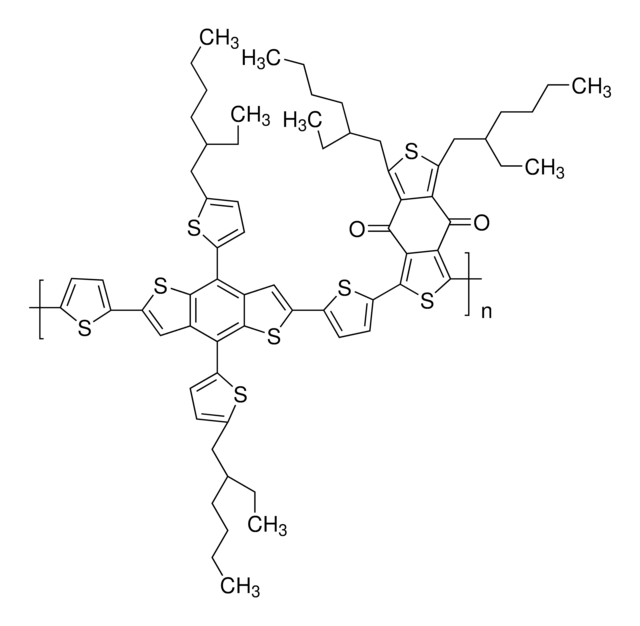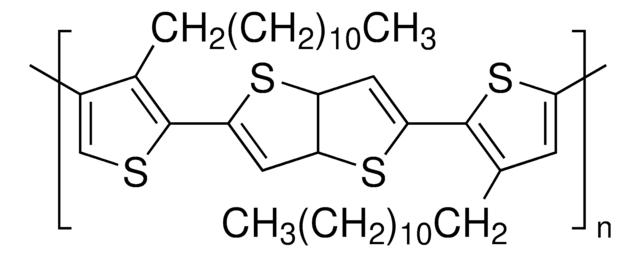901067
PBDTTT-C-T
Synonym(s):
Poly[[4,8-bis[5-(2-ethylhexyl)-2-thienyl]benzo[1,2-b:4,5-b′]dithiophene-2,6-diyl][2-(2-ethyl-1-oxohexyl)thieno[3,4-b]thiophenediyl]]
Select a Size
Select a Size
About This Item
Recommended Products
description
Band gap: 1.86 eV
Quality Level
Assay
≥99% trace rare earth metals basis
form
solid
mol wt
Mw 80,000-150,000 (GPC, PS standard)
greener alternative product characteristics
Design for Energy Efficiency
Learn more about the Principles of Green Chemistry.
sustainability
Greener Alternative Product
mp
>200 °C
solubility
chlorobenzene: soluble
chloroform: soluble
dichlorobenzene: soluble
Orbital energy
HOMO -5.11 eV
LUMO -3.25 eV
General description
Storage Class Code
11 - Combustible Solids
WGK
WGK 3
Flash Point(F)
Not applicable
Flash Point(C)
Not applicable
Certificates of Analysis (COA)
Search for Certificates of Analysis (COA) by entering the products Lot/Batch Number. Lot and Batch Numbers can be found on a product’s label following the words ‘Lot’ or ‘Batch’.
Need A Sample COA?
This is a sample Certificate of Analysis (COA) and may not represent a recently manufactured lot of this specific product.
Already Own This Product?
Find documentation for the products that you have recently purchased in the Document Library.
Articles
Novel biosensing devices, like bio-FET sensors, offer label-free analysis by detecting ionic and biomolecular charges, crucial for diagnostics and biological research.
Explore the eco-friendly potential of organic thin film transistors (OTFTs) for detecting chemical analytes, identifying viruses, and assisting in health diagnostics. This mini-review highlights challenges of achieving sustainability, safety, and biodegradability of each component of an OTFT sensor.
Professor Chen (Nankai University, China) and his team explain the strategies behind their recent record-breaking organic solar cells, reaching a power conversion efficiency of 17.3%.
Our team of scientists has experience in all areas of research including Life Science, Material Science, Chemical Synthesis, Chromatography, Analytical and many others.
Contact Technical Service








